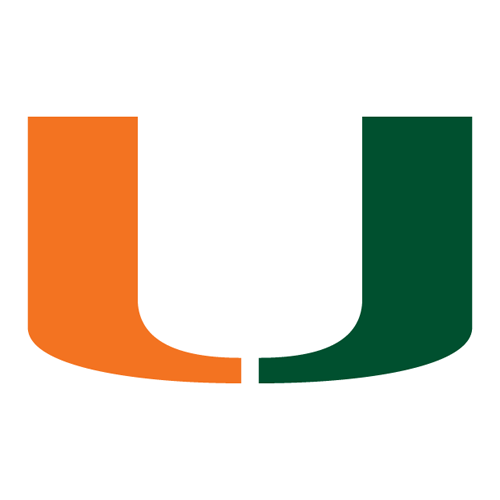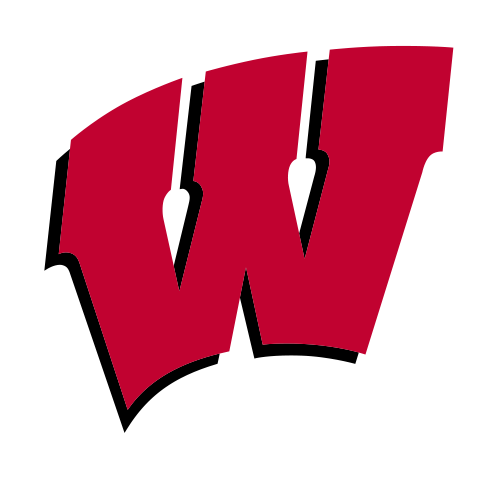




McMillan (6’5" /210 pounds) followed up his promising 39-reception, 702-yard, 8-touchdown true freshman performance with a sophomore supernova campaign. He caught 90-of-134 targets for 1,402 yards, 10 TDs, and a 2.79 yards per route average that ranked 18th nationally. McMillan averaged 22.9 fantasy PPG and dropped just two passes on 92 catchable targets for a microscopic 2.2% drop rate. Despite the departure of HC Jedd Fisch, Arizona returns 70.1% of their offensive production from a unit that ranked top-10 in success rate (52%), points per drive (3.2), and EPA/Play. Tet is a locked-in Top-3 CFF WR so long as he fully recovers from a spring leg injury.

The 2022 recruiting class’ top wide receiver prospect, Burden has done little to slow down his hype train. He showed flashes as a freshman by averaging 11.2 fantasy PPG with 8 touchdowns and a 33% broken tackle rate, however, that was just a precursor to his breakout in 2023. In his first six games, Burden feasted for 55 receptions on 74 targets for 795 yards and 5 touchdowns while scoring 20+ fantasy points in each contest. However, in his final seven, he caught just 31 passes on 50 targets for 446 yards and 4 touchdowns, eclipsing 17 points just twice in that span. Missouri’s schedule ranks as one of the easiest in the SEC (55th SOS), and QB Brady Cook returns along with 80% of their 2023 offensive production (10th in FBS). Burden is no worse than the CFF WR2.

A ride-or-die HC Jay Norvell guy, Horton spent two seasons at Nevada behind now-Packers WR Romeo Doubs, accumulating 52 receptions, 659 yards, and 5 touchdowns in 2021 before following HC Norvell over to CSU. Horton has been the unquestioned top dog in the Rams’ WR room, posting back-to-back 1,100-yard, 8-touchdown seasons despite playing just 12 games in each. His 11.2 targets per game is the highest target rate among all FBS returnees, while Colorado State’s pass-heavy offense ranks 10th nationally in plays-per-second (23.2 seconds). CSU is in Year 3 of Norvell’s coaching tenure and should score 30 PPG, a touchdown over their 24.7 PPG average of 2023. Horton is arguably the safest wide receiver to project in the country.

One of the true, great out-of-nowhere breakouts of the 2023 season, Jalen Royals (6’0" / 210 pounds) caught 0-of-4 targets in 2022 before exploding for 70 receptions on 99 targets (71%) for 1,084 yards and 15 touchdowns. Though he didn’t chart above 15 points in any of his first four games, Royals would emerge as a model of consistency, scoring at least 16 points in eight of his last nine contests. There’s a lot to like about Utah State’s offensive profile, with the Aggies playing at the 5th-fastest clip in the country and ranking 17th in passing explosiveness. Potent WR Terrell Vaughn has departed while Micah Davis should credibly fill the slot role with Royals as the clear alpha for a Utah State offense that ranked 8th nationally with 35 touchdown passes.

HC Brennan Marion’s Go-Go offense transformed a historically uninspiring UNLV squad into a 35 PPG attack that ranked 22nd out of 133 FBS programs. Michigan State transfer Ricky White (6’1" /190 pounds) went from averaging 11.6 PPG in 2022 to erupting for 89 receptions on 135 targets for 1,481 yards and 8 touchdowns for a crisp 20.4 PPG average. White’s 3.83 yards per route average ranked second in FBS (CJ Daniels), while his 90.6 PFF receiving grade charts second among all returnees, behind only Luther Burden’s 91.0. Early returns indicate FCS transfer QB Matthew Sluka should be able to step into departed USC QB Jayden Maiava’s starting job and keep the gravy train rolling for White. That projection is sufficient for him to be considered a high-floor target hog in a top-30 scoring offense.

Stewart entered College Station as a much-ballyhooed five-star prospect and wasted little time taking over the Aggies WR room, reeling in 53-of-103 targets for 649 yards and 2 touchdowns in just 10 games as a true freshman. He was victimized by prized QB prospect Conner Weigman’s injury last year, as backup QB Max Johnson was overmatched and ill-equipped to throw outside the numbers. He essentially played in only seven games, recording 37 receptions on 58 targets for 514 yards and four touchdowns while averaging in the 13 PPG range over his Aggies tenure. Stewart is expected to slide into departed WR Troy Franklin’s spot that produced 81 receptions (71%) on 114 targets for 1,383 yards and 14 touchdowns in Oregon’s second-rated, 44 PPG offense. Despite not producing a verifiable top-25 fantasy performance, Stewart is still worthy of a top-10 ranking amongst his peers at wide receiver.

Bo Nix’s adopted brother played three years at Troy, steadily improving until he torched the Sun Belt for 3.52 yards per route, 7.5 YAC and a 90.5 PFF receiving grade in 2022. With nothing left to prove, he transferred to Oregon last year, where he reached 14 fantasy points just once in his first five games. Johnson went on to score at least 11 points in all of his last nine games, and topped 20 points in six of his last eight for a 19 FPG average on the year. The slot weapon recorded a pristine 3.45 yards per route with a 144.6 passer rating when targeted despite the move up to the Power 5. With another precise signal caller in QB Dillon Gabriel taking over the starting job, Johnson’s role in OC Will Stein’s lethal passing attack is well established. His floor is as high as any Power Five wideout outside of Tet and Burden.

Atkins (5’10/172) built on a promising 2022 when he secured 19-of-22 receptions for 238 yards and three touchdowns. With HC Alex Golesh’s offense running the most plays per game in the country, Atkins’ fantasy relevance is tied to his prodigious volume from the slot position. He caught 28 passes over the first five games before exploding for 58 receptions over his last seven regular season contests, though he only scored two touchdowns in that spa, limiting his value. Atkins’ 7.8-yard ADOT indicates a possession-type role, while his 70% contested catch rate is a product of exceptional hands. With USF returning 88% of their offensive production from a passing attack that averaged 7.9 yards per pass (30th in FBS), Atkins is a safe, dependable slot weapon who lacks the field-tilting upside of some similarly ranked wideouts.

The most statistically unaccomplished of the top-15 CFF wide receivers, Bernard (6’1" / 203 pounds) is on his third team in the last three seasons, going from Michigan State to Washington to Alabama. While he sat behind Washington’s elite top-3 wideouts last year, he managed to catch 9-of-11 passes for 109 yards against Arizona and 6-of-7 for 63 yards versus Utah when Jalen McMillan was dinged up. Germie lined up in the slot 77% of the time last year with a pretty conservative 7.8-yard ADOT, though he primarily lined up wide in his standout Spring game with the Crimson Tide. Now, with Bernard following HC Kalen DeBoer to Alabama, he is expected to wrest control of a wide-open Tide receiver room and become QB Jalen Milroe’s primary weapon.

Ashlock (6’1" /175 pounds) rocketed to relevance last year with 15 catches, 241 yards, and 3 touchdowns in his first two games against Stanford and Vanderbilt. While the WR1 usage rate was very consistent, receiving 8 targets in all but one of his 13 appearances, he failed to clear 87 yards in any of his final 11 contests. Ashlock’s pedestrian 832 receiving yards, 1.87 yards per route average, and 3.6 YAC average are uninspiring marks, especially for a slot-only WR. He benefits significantly from Hawaii’s ultra-high passing game usage, though, as the Rainbow Warriors ranked #1 in FBS with a 63% pass rate on standard downs (FBS Avg = 42%). Ashlock is another high-usage, low-explosiveness slot wideout who can be counted on for 15-20 points every week, but will rarely surpass it.

After three years on campus as a lightly used reserve slot receiver, Restrepo (5’10" /198 pounds) worked his way into the starting lineup and delivered an 18 PPG campaign for the Canes. Though only 12% of his targets were 20+ yards downfield, he caught 11-of-14 deep shots for 332 yards and two touchdowns when called upon. Only eight returning receivers saw more than Restrepo’s 120 targets, and his 2.76 yards per route average ranks seventh nationally among returnees who remain with their 2023 school. Wazzu transfer QB Cam Ward takes over for Restrepo’s former roommate, Tyler Van Dyke — fortunately, the new pairing showed plenty of chemistry in the spring game. Expect another dynamic season as a dependable weekly CFF WR2 from Restrepo.

The latest in a parade of high-volume slot receivers, Hobert (5’11" /180 pounds) was initially enrolled at Wazzu before transferring to Utah Tech (current QB — Deacon Hill). In 2022, he went nuclear, catching 91 passes on a whopping 149 targets (!) for 1,268 yards and 16 touchdowns before taking his talents to Texas State in 2023. Despite playing just 11 games last year, Hobert’s 76 receptions on 99 targets for 895 yards and 8 touchdowns generated 19.4 PPG. He has averaged 2.5 yards per route in each of his last three seasons and benefits from the Bobcats’ potent offense that ranked 21st in EPA/Play and sixth in FBS with 74.6 plays per game. JMU transfer QB Jordan McCloud takes over the starting reins and should keep the Texas State offense humming at a 32.5 PPG clip, which should translate to another 20 points per game average for Hobert.

Though Oklahoma State had a warhammer in the backfield in RB Ollie Gordon, the Cowpokes ranked 109th in standard downs run rate and 125th on passing downs. However, OSU ranked 120th in passing explosiveness, instead preferring to work their way down the field with Presley and then cash in the touchdowns with star RB Gordon. This resulted in Presley leading the Power 5 with an absurd 142 targets, a dirt-low 5.6 ADOT, and dodging 32 tackles, second most in the FBS (Nabers #1 w/35). His 101 receptions lead all P4 returnees, but the 991 receiving yards and six touchdowns through 14 games restricted his total PPG average to 18.1. Presley could have trouble reaching the 20 FPG threshold due to the abovementioned factors, but he projects a relatively matchup-proof 15-18 PPG weekly contributor.

Wilson (5’10" / 185 pounds) barnstormed the SEC by reeling in 86% of his 71 targets last season, leading all FBS wideouts in catch rate despite being a true freshman last year. His 2.8 aDOT illustrated Wilson’s Rondale Moore-esque usage — a series of gameplanned, extended handoffs that allowed Wilson to use his natural explosiveness to accrue 7.9 yards after catch, which ranked 19th nationally. Though he got injured in Week 3 and missed two games, he went on to average 10 targets, 8 receptions, and 1,touchdown per game over his next six contests. While Florida plays the toughest schedule in the country, Wilson didn’t drop a single pass last year and should continue to average double-digit target volume per-game with a veteran QB in Graham Mertz delivering him the ball.

The most prolific freshman receiver from the 2023 prep cycle, Concepcion (5’11" /187 pounds) burst on the scene as OC Robert Anae’s versatile chains-mover. He ran 93% of his routes from the slot, averaging 7.3 yards after catch while securing at least 5 passes for 60+ yards in seven of his last eight games. Though he received just one carry through the first six games, Concepcion logged 40 carries over the last seven contests for 314 rushing yards, bringing his total yardage on the year to 1,159. He averaged 19.4 points per game in 2023 and should continue to be the focal point of NC State’s passing attack, though it remains to be seen how many carries he will receive this year, which somewhat clouds Concepcion’s CFF upside.

While the since-transferred WR Caullin Lacy led the Jaguars’ receiving corps with a monster 91 receptions, 122 targets, 1,316 receiving yards, and 22.6 FPG, Pritchett (5’8" /164 pounds) opened the season as a part-timer before quickly cementing himself as a weekly starter. He finished with double-digit point totals in nine of his last 10 games, including a 32.7-point explosion against Eastern Michigan in their bowl game. Perhaps the most encouraging data point about Pritchett is his ridiculous 45% broken tackle rate (25 MTF on 56 recs), proving his ability to make people miss in space despite a diminutive frame. If Pritchett gobbles up Lacy’s 120-target volume, he will be a bonafide every-week CFF starter.

Harris (6’2" /205 pounds) has posted back-to-back 17+-point seasons despite transferring from Louisiana Tech to Ole Miss. The established starting X receiver for Lane Kiffin’s potent offense that should be favored by 10+ points in its first six games thanks to an incredibly favorable schedule, Harris has a well-established performance baseline. However, there was a boom-or-bust element to his 2023 campaign as he posted two 40-plus point weeks against Mercer and Texas A&M — he eclipsed the 17-point mark only twice in his other 10 games. That being said, with the continuity between him and QB Jaxson Dart, and his 3.17 yards per route average (third among returning P4 wideouts), Harris is a matchup-proof CFF WR2. He is more valuable in best ball formats due to his tendency to drop occasional nukes and then take a backseat in other games.

Much was expected from the former five-star prospect after his 74-reception, 1,151-yard, 10-touchdown 2022, when he averaged 21 PPG. Unfortunately, the massive drop in QB play from CJ Stroud to Kyle McCord, coupled with an early season injury that cost Egbuka multiple games and hampered him in several others, led to a disappointing 2023. With new OC Chip Kelly now in Columbus, and Kansas State transfer QB Will Howard the likely starter, Egbuka has a shot to repeat his breakout 2022 when he averaged a sensational 3.01 yards per route. To do that, he will need to catch more than the 2-of-8 deep passes for 47 yards he recorded on a paltry 13% deep rate last year.

Pauling (5’10" /190 pounds) followed HC Luke Fickell from Cincinnati to Wisconsin, with the promise of an expanded role in new OC Phil Longo’s potent up-tempo offense. But he saw only 19 targets in his first four games, accruing a modest 14 receptions for 175 yards and zero TDs in that span. In Week 5 against Rutgers, his role changed, receiving a staggering 96 targets over the final nine games, culminating with an 8-catch, 143-yard, 2-touchdown performance against LSU in their bowl game. With big-armed Miami transfer QB Tyler Van Dyke taking over for the disappointing Tanner Mordecai, expect Pauling to pick up where he left off in OC Longo’s slot target-hog role that produced a monster season from former UNC WR Josh Downs in 2022. He’ll have to do it in the defense-oriented Big Ten on a team that scored 23 PPG last year, though (90th).

A total afterthought for his first four years on campus, tallying 16 receptions for 160 yards in 2022, Noah Smith (5’10" /190 pounds) barely made a mark in the scoresheet with 7 receptions and 60 yards through the first three games of 2023. He then inhaled 70 receptions on 88 targets for 719 yards and 6 touchdowns over the next eight contests before suffering an injury in the season finale. On the positive side, Sam Houston State ranks 17th in offensive returning production, has a year of experience at the FBS level, and returns four starting offensive linemen. That being said, the Bearkats (actual spelling, for some reason) averaged a pitiful 19.5 PPG (111th), 5.9 yards per pass (123rd), and a 39% success rate (119th) last year. With Sam Houston State ranking 129th nationally in 247Sports offensive talent rating, there is reason to be concerned about the offense's overall potency, which could affect Smith’s production.

Taylor possesses a true X WR profile, measuring in at 6’3" / 215 pounds, and has the benefit of playing in Memphis’ lethal 38 PPG offense that returns 71% of its offensive production, including top-12 CFF QB Seth Henigan. We love continuity in CFF circles, and the Henigan-Taylor combo is among the most bankable in the country, with six 100-yard+ games in his last 10 appearances. The fact that he scored only 4 touchdowns feels like an aberration given his alpha-X physical profile, and serves only to artificially suppress Taylor’s projection this season. He is a low-end WR1/high-end WR2 who could conceivably finish in the top 5 if Memphis’ offense continues to tear apart the AAC.

Burgess (5’11" /190 punds) emerged in 2022 by reeling in 58-of-102 passes for 717 yards and 7 touchdowns in just 10 games. With Jeremy Singleton departed, the door was wide open for Burgess and slot receiver Khaleb Hood to earn 10+ targets a game in HC Clay Helton’s air raid offense. Despite GaSo ranking top-5 nationally in pass rate on both standard downs (56.4%) and passing downs (79.5%), Burgess regressed from averaging 17.3 PPG in 2022, to 14.7 PPG in 2023. Hood departs this season, with Dalen Cobb expected to pick up the vacated slot reps in his place. Georgia Southern returns just 42.4% of its offensive production and must break in a new quarterback after averaging 30.6 points and ripping off a brisk 74 plays per game last year (8th). Burgess is a highly projectable receiver who is a near lock for 15 CFF PPG with upside. However, his slot contemporary Cobb has just as much appeal in Hood’s vacated role that produced 17.5 PPG last year, but he’s going 10+ rounds after Burgess in most best ball drafts.

Bond’s ranking is based more on projection than on-field production, as the four-star former Alabama recruit caught 49-of-75 targets while running 58% of his routes from the slot. His peripherals don’t pop, with a career 4.7 yards after catch average, 1.7 yards per route, and 12% broken tackle rate. But Bond's ability to win downfield makes him such an intriguing CFF prospect, as he secured 9-of-18 deep shots for 302 yards, 33.6 YPC, and 4 touchdowns. What’s also interesting is how Bond was barely used in the intermediate range, catching just 5-of-15 targets for 80 yards from 10-19 yards. Now that he’s with Texas, Bond is in place to finally explode in his third season with upper-echelon QBs Quinn Ewers and/or Arch Manning throwing to him. He will have to outperform 2023 five-star WR Johntay Cook, Houston transfer Matthew Golden, and former Oregon State WR Silas Bolden to reach his full CFF potential.

A former Kansas Jayhawk who caught just 2 passes in 2022, McBride (6’1" /165 pounds) transferred to Hawaii in 2023 and benefited significantly from the move to a pass-heavy run-and-shoot offense. He received 8-plus targets in 8-of-13 contests, with a sky-high 17.0-yard ADOT that was the sixth-highest mark in the country — almost 30% of his targets and five touchdowns occurred on passes 20-plus yards downfield. While Hawaii scored only 21 PPG in 2023, it returns 77% of its offensive production, ranking 15th nationally. Hawaii also plays one of the easiest schedules in the country, drawing Delaware State, UCLA, Sam Houston State, and Northern Iowa in non-conference play. There are multiple positive indicators in his favor regarding McBride’s ability to repeat his 16.9 CFF PPG average in 2023.

Lacy (5’10" /190 pounds) had his way with Sun Belt Conference secondaries last season, recording 9.3 yards after catch (3rd nationally), 3.14 yards per route (12th), and 28 broken tackles (#5 among FBS WRs) for OC Major Applewhite and South Alabama. However, this year, he will suit up for the Brohm brothers in Louisville, where he will have to re-establish his value amongst a Power 4 wide receiver room that includes former Alabama five-star WR Ja’Corey Brooks and talented junior playmaker Chris Bell. Will the dynamic Lacy earn a sizable enough target volume to make up for the rise in competition and change in role? If he assumes the 2024 "Brohm WR muse” role of Rondale Moore or David Bell, Lacy will almost certainly outperform his ADP. However, if he is relegated to a secondary role, he will be virtually unplayable outside of extremely favorable matchups — the classic “high-risk, high-reward” conundrum.